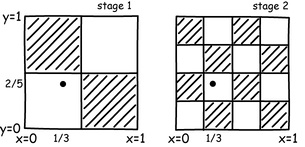|
John D.
Norton
Approximations, Idealizations
and Phase Transitions
|
|
home >> research >> Approximations... |
|
 |
This paper proposes that idealizations are distinguished from approximations in that only idealizations involve novel reference. This difference is important when idealizations are created by taking infinite limits such as in statistical mechanics. For these infinite limits may have very strange properties, much odder than the discontinuities of phase transitions now widely acknowledged in the literature. |
"Approximation and Idealization: Why the Difference Matters" Philosophy of Science, 79 (2012), pp. 207-232.Download. |
 |
1. Approximations of arbitrarily large but finite systems are often mistaken for infinite idealizations in statistical and thermal physics. The problem is illustrated by thermodynamically reversible processes.
2. Whether phase transitions comprise a failure of reduction is confounded by a confusion of two senses of "level": the molecular versus the thermodynamic level and the few component versus the many component level. |
"Infinite Idealizations,"European Philosophy of Science--Philosophy of Science in Europe and the Viennese Heritage: Vienna Circle Institute Yearbook, Vol. 17 (Springer: Dordrecht-Heidelberg-London-New York), pp. 197-210.Download. |
 |
Are phase transitions a banner instance of emergence or treated reductively by renormalization group methods? The answer depends on how you define levels between which the relations of reduction and emergence obtain. |
"Confusions over Reduction and Emergence in the Physics of Phase Transitions" in Goodies. |
|
|


